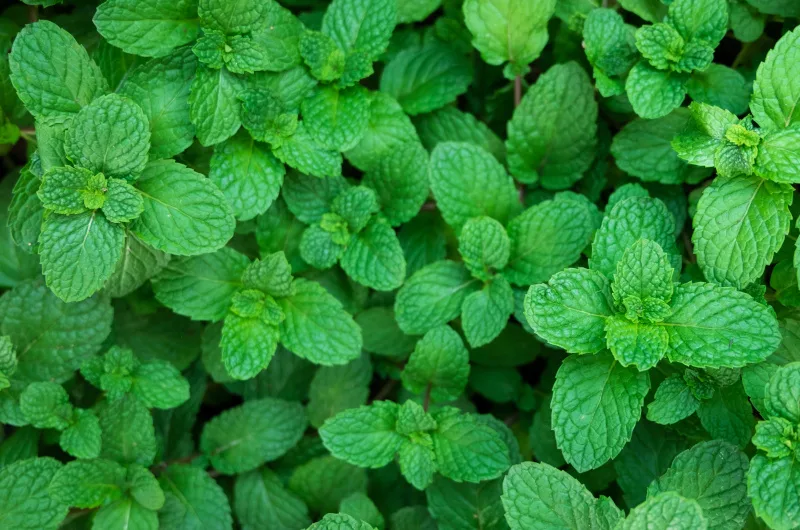How To Grow Mint
Mint is a versatile herb known for its refreshing aroma and culinary uses, including as an accompaniment to peas or new potatoes, or in mint sauce. Whether you’re a seasoned gardener or a beginner, growing mint in your garden is a rewarding and straightforward endeavour. In this guide, we’ll take you through the steps to successfully cultivate mint, from choosing the right variety to harvesting the leaves for your favorite recipes and teas.
Selecting the Perfect Mint Variety:
There are several mint varieties to choose from, each with its unique flavour profile. Popular choices include spearmint, peppermint, and chocolate mint. Consider the intended use of the mint when selecting a variety. For culinary purposes, spearmint and peppermint are excellent choices, while chocolate mint adds a delightful twist to desserts and beverages.
Some of the most popular uses for mint are when cooking potatoes or peas, or in mint sauce. Spearmints tend to be one of the best options in these cases. Another increasingly popular use is in tea, which many people find greatly reduces digestive issues and IBS. We’d recommend peppermint or spearmint for use in teas. As the name suggests, peppermint will introduce a hint of peppery heat, whilst spearmint gives a fresher taste.
Preparing the Planting Area:
Mint thrives in moist soil and partial shade, making it ideal for British gardens. Choose a location that receives a few hours of sunlight each day but is protected from intense midday sun. Mint has a tendency to spread vigorously, so planting it in containers or raised beds is a good option to prevent it from taking over your garden – or you can sink an old bucket into the ground, adding a few holes for drainage, filling with soil and using for planting to stop invasive roots spreading anywhere they’re not wanted. If planting directly in the ground, prepare the soil by removing weeds and loosening it with a garden fork or tiller. Mint prefers slightly acidic soil with a pH between 6.0 and 7.0.
Planting Mint:
If planting mint in containers, ensure they have drainage holes to prevent waterlogging. Fill the container with well-draining potting soil and plant the mint about 2 inches (5 cm) deep, leaving enough space between plants to allow for their spreading growth habit. If planting directly in the ground, dig a hole slightly larger than the root ball of the plant. Place the mint in the hole and backfill with soil, gently firming it around the base of the plant. Leave enough space between each plant, as mint tends to expand rapidly.
Watering and Care:
Mint requires consistent moisture to thrive. Water the plants regularly, especially during dry spells, ensuring the soil remains evenly moist. Avoid overwatering, as mint does not tolerate waterlogged conditions. Applying a layer of organic mulch or grass cuttings around the plants can help retain moisture and suppress weed growth. Monitor the plants for pests, such as aphids or mint rust, and take appropriate action if necessary.
Harvesting Mint Leaves:
Once the mint plants have become established, you can start harvesting the leaves. Harvesting mint regularly encourages bushier growth. Select a few stems and pinch off the leaves at the desired height. For the best flavour, harvest mint leaves in the morning when the essential oils are most concentrated. Use the harvested leaves immediately or store them in airtight containers in the refrigerator for later use. It’s also worth drying some of the leaves, then storing over in a jam jar for use over winter.
Propagating Mint:
Mint is a prolific grower, and propagating it is relatively simple. To propagate mint, take cuttings from healthy plants in the spring or early summer. Trim a stem about 4-6 inches (10-15 cm) long, remove the lower leaves, and place it in a glass of water. After a few weeks, the cutting will develop roots. Transfer it to a pot with well-draining soil, and once it becomes established, you can transplant it into the garden.
Growing mint in your British garden is an enjoyable and rewarding experience. With its fresh fragrance and versatile uses in culinary creations and beverages, mint is a valuable addition to any herb garden. Get started today, and savour the delights of this aromatic herb right at your fingertips.




One thought on “How To Grow Mint”